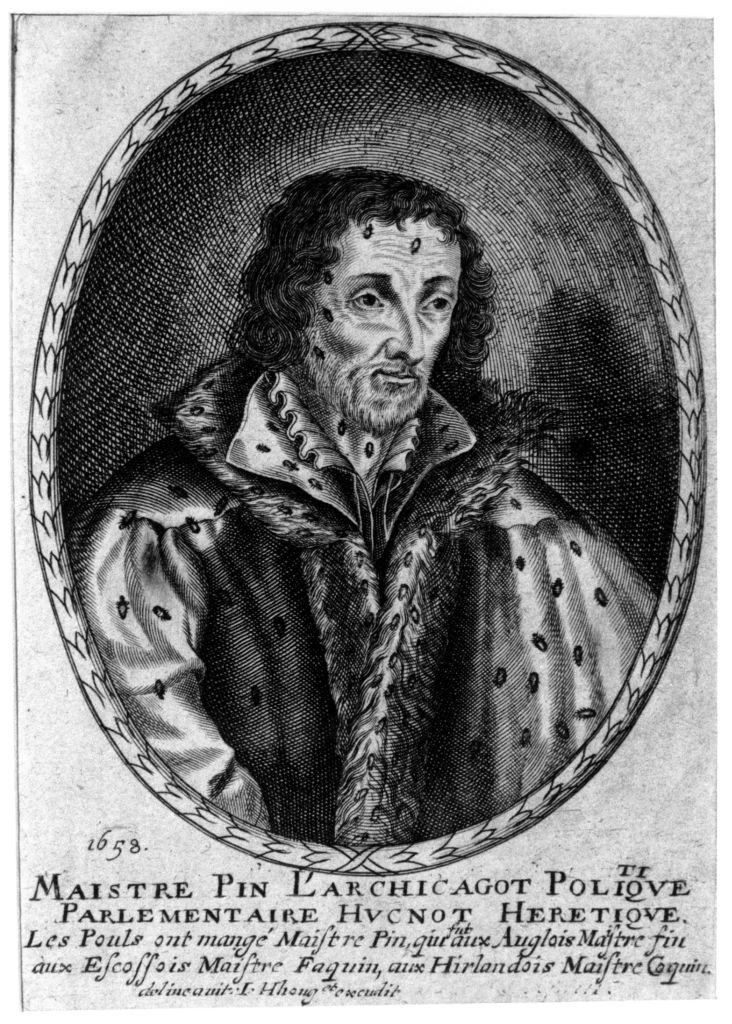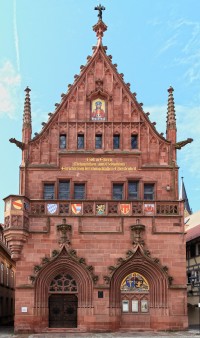Philipp Melanchthon, Brustbild nach rechts im Oval. Gesicht und Oberkörper sind mit Ungeziefer übersät. Bez.: "MAISTRE PIN L’ARCHIC AGOT POLITIQUE/ PARLEMENTAIRE HVCNOT HERETIQUE./ Les Pouls ont mangé Maistre Pin, qui fut aux Anglois Maistre fin/ aux Escossiers Maistre Faquin, aux Hirlandois Maistre Conquin."
en

